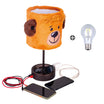When it comes to lighting our homes, the right choice can transform an ordinary room into a stunning space. Among the myriad options available, pendant lamps stand out for their versatility, style, and ability to enhance any environment. Whether you’re looking to create a cozy atmosphere in your dining room or a vibrant ambiance in your kitchen, pendant lamps offer both function and flair. Let’s explore the benefits and design possibilities of incorporating pendant lighting into your home.
What Are Pendant Lamps?
Pendant lamps are lighting fixtures that hang from the ceiling, typically suspended by a chain, cord, or rod. They come in various shapes, sizes, and styles, making them suitable for different applications, from task lighting to decorative accents. These lamps can be used individually or in clusters to achieve a striking visual effect.
Why Choose Pendant Lamps?
1. **Versatile Design Options**
One of the most appealing aspects of pendant lamps is their diverse design range. From sleek and modern to rustic and vintage, there’s a pendant lamp for every aesthetic. Consider glass pendant lights for a contemporary look or industrial-style fixtures with metal finishes for a more urban vibe. The choice of material, shape, and color can complement your existing decor and serve as a statement piece.
2. **Functional Lighting**
Pendant lamps are not just about looks; they also provide functional lighting. They can be positioned to illuminate specific areas, such as dining tables or kitchen islands, making them perfect for task lighting. Adjustable pendant lamps can even be customized to suit your needs, allowing you to direct light where it’s needed most.
3. **Space-Saving Solutions**
For smaller spaces, pendant lamps can be a perfect alternative to bulky chandeliers or floor lamps. They draw the eye upward, creating the illusion of a larger room while adding a touch of elegance. Hanging a pendant lamp above a table or countertop can define a space without overwhelming it.
4. **Layered Lighting**
Incorporating pendant lamps into your lighting design allows for layered lighting effects. By combining ambient, task, and accent lighting, you can create a well-balanced and inviting atmosphere. Use pendant lamps alongside wall sconces and floor lamps to add depth and dimension to your space.
How to Choose the Right Pendant Lamp
1. **Consider the Scale**
When selecting a pendant lamp, consider the size of the space and the height of your ceilings. Larger rooms can accommodate bigger fixtures, while smaller rooms may benefit from more delicate designs. As a rule of thumb, the diameter of the pendant should be about one-third the width of the surface below it.
2. **Think About Functionality**
Determine where you want to use the pendant lamp and what purpose it will serve. For example, a bright, focused light is ideal for task areas, while softer, diffused lighting works well for creating a cozy atmosphere.
3. **Match Your Style**
Choose a pendant lamp that complements your overall design aesthetic. Whether you prefer minimalist, bohemian, or eclectic styles, there’s a pendant lamp that can tie your room together.
4. **Experiment with Grouping**
For a dramatic effect, consider grouping multiple pendant lamps together. This works especially well in larger spaces, where a cluster of different sizes and styles can create an eye-catching focal point.
Final Thoughts
Pendant lamps are a fantastic way to enhance your home’s lighting design while adding character and style. With their versatility and range of options, you can find the perfect pendant lamp to fit your needs, whether you're looking to brighten up a room or create a cozy nook.
As you consider your lighting options, remember that the right pendant lamp can not only illuminate your space but also reflect your unique personality and style. So, get inspired and start your journey toward beautifully lit spaces with the perfect pendant lighting!






























Hinterlasse einen Kommentar
Diese Website ist durch hCaptcha geschützt und es gelten die allgemeinen Geschäftsbedingungen und Datenschutzbestimmungen von hCaptcha.